FrSKY R-XSR & G-RX8 — two new mighty receivers

Only couple of weeks passed since we had reviewed the latest family of FrSKY flight controllers and we are ready again to impress you with the two new FrSKY receivers: R-XSR and G-RX8! Both seem to become the bestsellers in the nearest future!
Honestly, which other company in R|C field brought so much new products to the market for the last quarter? New radios and their revisions, new FCs, new receivers, new modules, new sticks…, together with the new company website… Seems as FrSKY staff never sleeps But we would never have enough, right?
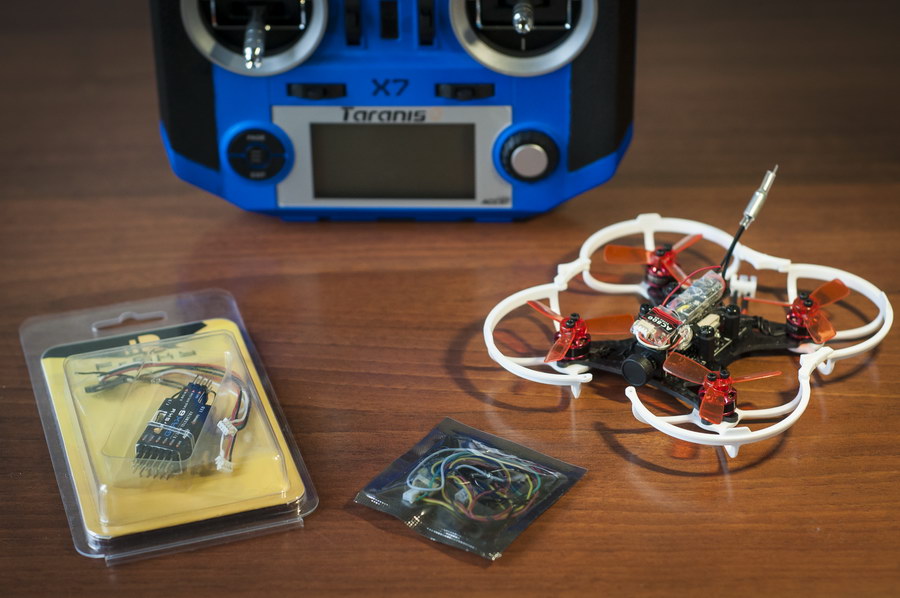
So, two new and very interesting receivers today. Let’s start with the R-XSR:
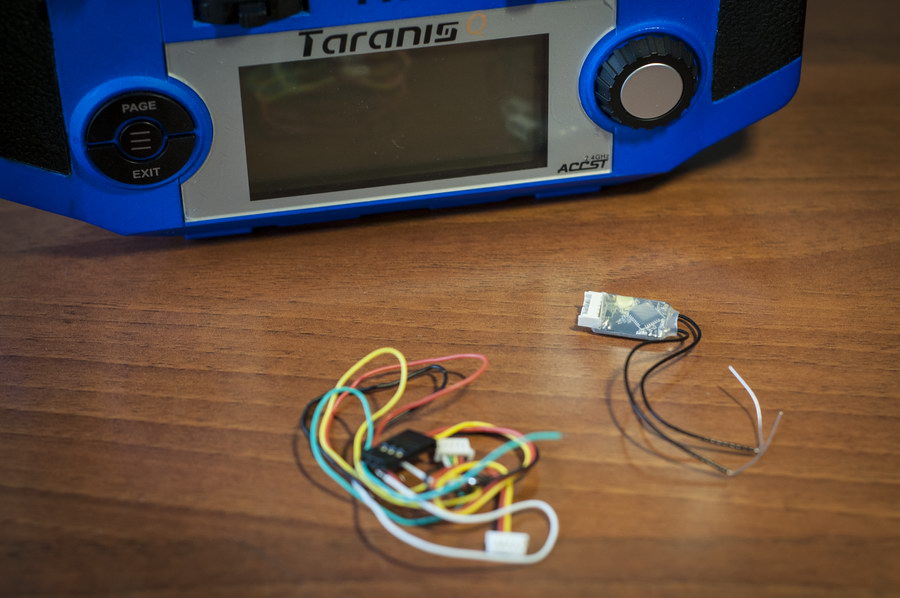
Currently, one of the most popular FrSKY receiver on the market is XSR. It has reasonable size and weight, full telemetry, 16CH SBUS and SPORT. Many FPV racing copters and smaller class helicopter pilots would choose this receiver as their favorite because it fits perfectly in almost any setup and frame. It works flawlessly, very stable and reliable, gives very good flying range.
Some time ago, when some smaller FPV racing frame classes (like 190 and less) started to emerge, FrSKY introduced XSR-M receiver — very similar to XSR but with significantly smaller weight and dimensions of: 26×19.2 V/S 20x20mm, 4.3g V/S 1.8g.
XSR V/S XSR-M dimensions:
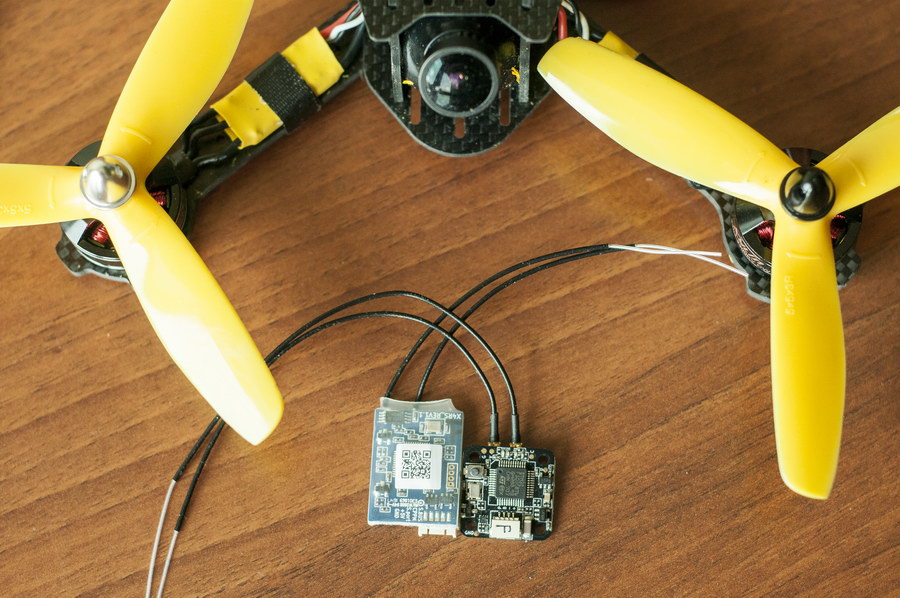
Additionally, it has slightly improved range and easier procedure of changing antennas which are detachable now…
And guess what!? It seems that FrSKY would always find a way for further improvements: R-XSR is the newest receiver in XSR family, packed in tiny dimensions of 16x11mm, having almost no weight (1.5g) and features highly demanded redundancy function!
XSR-M V/S R-XSR dimensions:
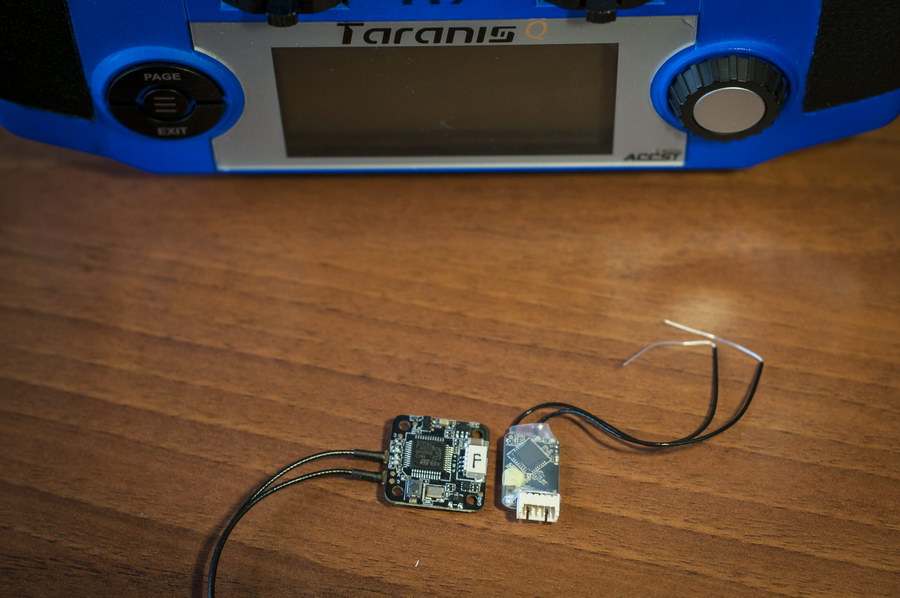
Technical specifications:
- Dimension: 16*11*5.4mm (L*W*H)
- Weight: 1.5g
- Number of channels: 16CH (1-16CH from SBUS channel, 1~8CH from CPPM channel)
- Operating Voltage Range: 4~10V
- Firmware Upgradable
- Compatibility: FrSky X Series modules and radios in D16 mode
Features:
- Ultra mini size and light weight
- Support telemetry and Smart Port enabled
- Full range
- Switchable SBUS/ CPPM signal output
- Supports redundancy function
- IPEX connector, replaceable antennas
Manual can be found HERE
In real life it means that while having all features of XSR or XSR-M receivers, R-XSR would:
- be an appropriate choice for any model of any size and class
- would fit perfectly into something like 90mm FPV copter frames
- outperform any other tiny receivers by functions, features and range
- would bring more range and radio link stablity if used with second receiver as a slave
Quick note on redundancy feature: R-XSR (as well as other X-series FrSKY receivers that have extra «R» in the name) has the ability to accept signals from the second (slave) receiver over SBUS and to select and forward the strongest signal among them to flight controllers over SBUS (or to servos over PWM). Consequently, having two receivers — master and slave — on the same model would significantly improve signal quality and help to maintain good RSSI levels even in the most complex environmets. Any SBUS equipped receiver could act as a slave (telemetry should be turned off on slave). The best slave option would be to use XM+ or other receivers with the ability to turn on «telemetry off» mode.
As the result — if you were flying in some highly «contaminated» environments like forests, buildings or just with many other models and experiencing RSSI problems — R-XSR might help a lot to get rid of radio signal warnings and get the most reliable link with your model. Along with all other features it has and all other usage scenarios it provides concerning its tiny size and weight.
Example: KingKong GT90 (FrSKY Vantac 90GT) with AC800 receiver V/S FrSKY R-XSR:
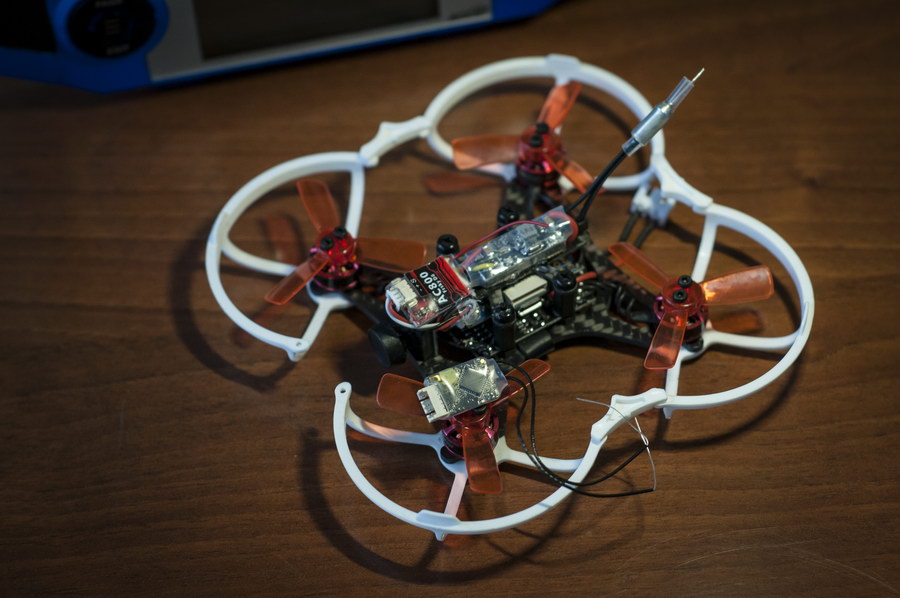
Range test:
Tested it against XSR and XSR-M receivers. Our previous test of XSR V/S XSR-M showed a slight advantage of XSR-M due to the newer antenna design.
Newest R-XSR is slightly behind regular XSR in terms of RSSI range test figures — 1-2 RSSI points less at the same range and in the same places… As with any other full range small FrSKY receiver — you can expect ~1.5km in the open flield and some different results in highly «contaminated» enviromnemts depending of amount of obstacles or radio interference around. But it is absolutely win over FrSKY XM (not XM+) and any third-party tiny receivers that have very limited range of ~150m. But even if you feel that it is not enough for you — there is an ability to use redundancy function and a slave receiver to make radio signal almost bullet proof.
I would say that R-XSR is a must for any pilot with >80mm copter frames or other small models. There is no other so capable, so small and full range receiver on the market.
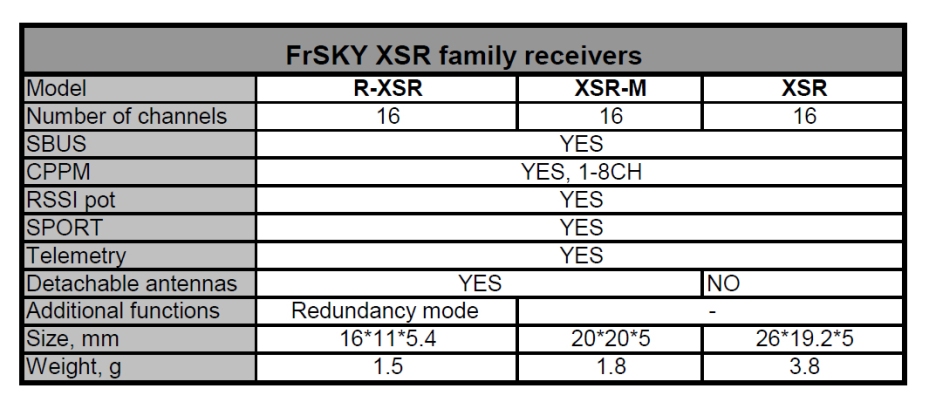
Note: keep in mind that total antenna length of R-XSR is only 9cm in comparison to 14.5cm in XSR-M.
As always — this receiver has SPORT which means that we can unpgrade or change (EU LBT to FCC) FW version and daisy chain other SPORT telemetry sensors.
Now, lets jump to G-RX8 receiver:
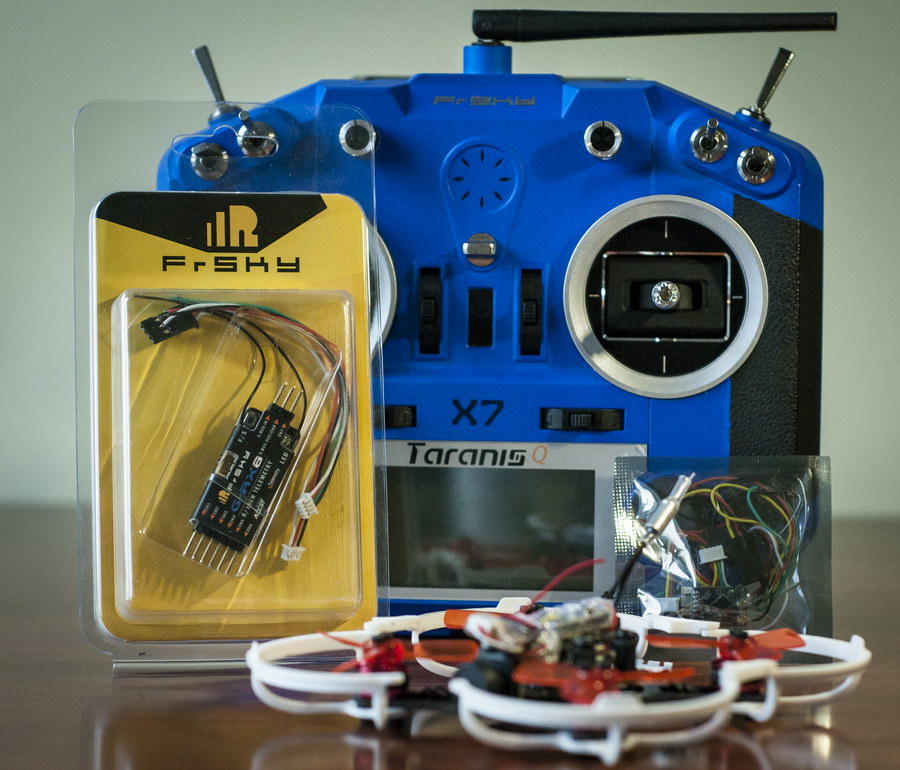
FrSKY claims that G-RX8 receiver is mainly addresses glider model pilots. Why? Because among all other tasty functions it has in built high precision vario sensor capable of registering flying altitude with 0.1m resolution along with the vertical speed.
In contrary to XSR-family, this receiver belongs to more universal type which is more common for planes, helis, gliders and larger copters. The absence of the hard case also tells us that it is mainly intended to be used with planes and gliders. 8 regular PWM ports togehter with 16CH over SBUS, analog telemtry input pin (A2) and SPORT create many possible usage scenarios. I would say that the closest relative in all FrSKY family would be RX8R receiver that has a hard case and more PWM output ports but the same features and no variometer inside.
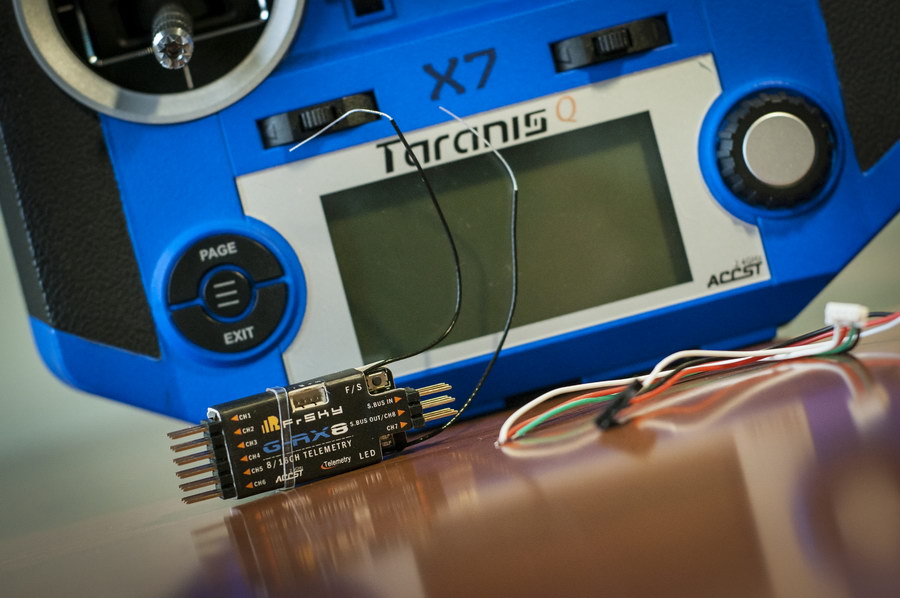
Technical specifiations:
- Dimension: 55.26*17*8mm
- Weight: 5.8g
- Number of Channels: Up to 16 CH
- Operating Voltage Range: 4.0 -10V
- Operating Current: 100mA@5V
- Operating Range: Full range
- Firmware Upgradable
- Compatibility: D16 mode
Features:
- Intergrated high precision variometer sensor
- Support redundancy function
- Support telemetry data transmission
- Switchable SBUS/PWM mode (1~8CH from PWM outputs and 1~16CH from SBUS output)
Manual can be found HERE
Similarly to other X-series receivers with extra «R» in the name — G-RX8 also features redundancy function which would greatly improve radio signal reception on the model.
Quick note on redundancy feature: G-RX8 (as well as other X-series FrSKY receivers that have extra «R» in the name) has the ability to accept signals from the second (slave) receiver over SBUS and to select and forward the strongest signal among them to flight controllers over SBUS (or to servos over PWM). Consequently, having two receivers — master and slave — on the same model would significantly improve signal quality and help to maintain good RSSI levels even in the most complex environmets. Any SBUS equipped receiver could act as a slave (telemetry should be turned off on slave). The best slave option would be to use XM+ or other receivers with the ability to turn on «telemetry off» mode.
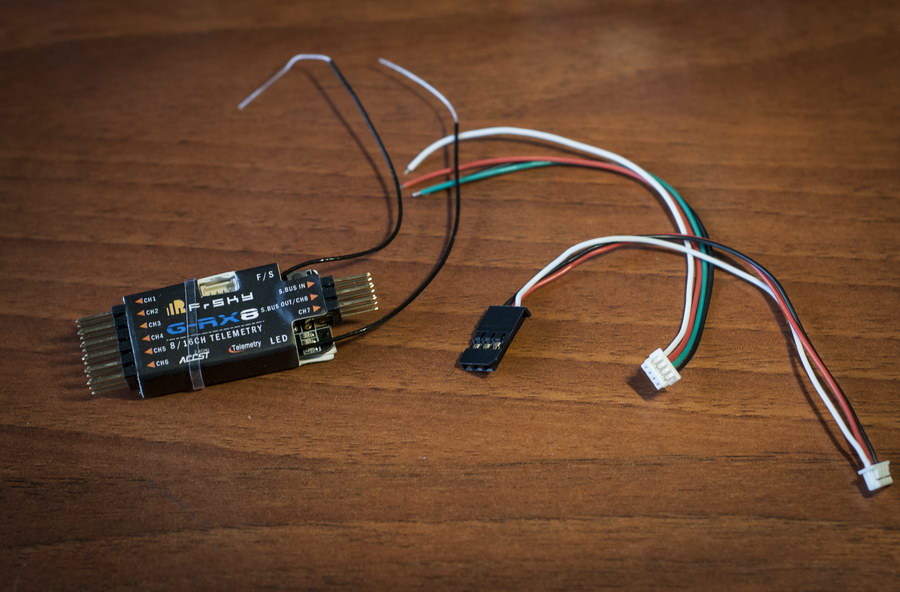
Some more peculiar abilities of G-RX8:
- Can be programmed to output 1-8CH or 9-16CH range over PWM
- Can be used in pair with other X-series PWM equipped receiver to output 1-16CH over PWM
- In SBUS mode: 1-6CH PWM would output high precision PWM signal (error <0.5us), SBUS IN would be used to connect slave receiver for redundancy system and SBUS OUT would output 1-16CH.
- PWM mode: 1-4CH PWM would output high precision PWM signal (error <0.5us), 4-8CH PWM would output regular PWM signal and SBUS IN|OUT would not be used.
- In built variometer sensor can be turned On|Off
As always — this receiver has SPORT which means that we can unpgrade or change (EU LBT to FCC) FW version and daisy chain other SPORT telemetry sensors.
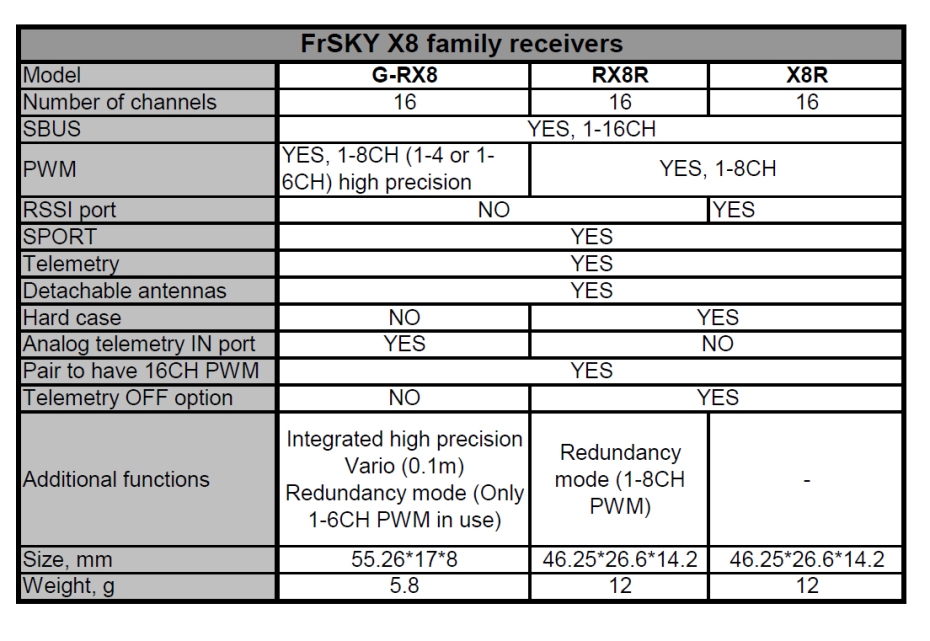
Glider function:
Along with:
- RSSI — signal strength
- RxBT — receiver voltage
- A2 — analog port for main battery voltage (with voltage divider like FLV02)
G-RX8 would provide:
- Alt (m) — altitude
- Vspd (m/s) — vertical speed.
There is a dedicated Variometer setup under Telemetry tab in model settings menu in which we can choose vario source (sensor) and setup all necessary model ascend, descend and Alt hold tones. While flying the model we would be able to hear whether our model gaining or loosing altitude and understand climb and descend vertical speed. Additionally, there are some telemetry LUA scripts that would also provide visualization of this data.
Note: it might be very handy to setup and use telemetry data reset function right before the flight to bring Alt readings to zero while on the ground.
Range test:
Range was checked in comparison to RX8R and X8R receivers. No problems here. This receiver is a full range model which can deliver >1.5km flight range in open field with ease. RSSI figures are the same as on X8R and RX8R receivers at the same places and on the same distance. In best circumstances such receivers can have ~ 3km radio link. But even if it would not be enough for you — you can always use redundancy feature and a slave receiver with G-RX8 to get the best possible flight distance.
Thank you for reading!
Stay tuned, more reviews to come….



